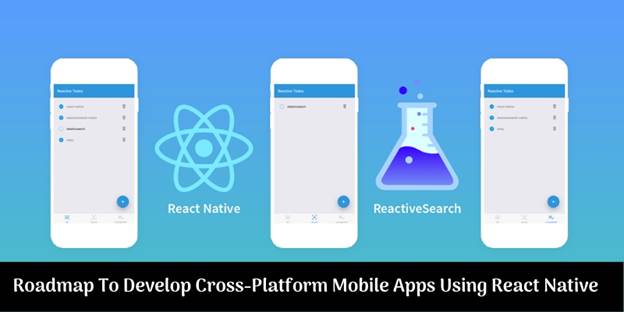Today Virtual is the new Real. Why businesses are entering this virtual strata has a core reason behind it! It is one of the most powerful way of reaching out to hundreds of thousands of customers and advertise your product. An app for the virtual market is an added boon for the very competitive market.
Mobile apps have become a major concern for modern marketing. You will be surprised to see the Appannie data on the mobile app usage statistics. USA users have spent 2 hours and 15 minutes, Brazil, South Korea, and Mexico users have spent 3 hours daily interacting with the smartphones.
Also, the patron Google states that average number of users have 35 apps installed on their smartphones. There are different technologies participating in this rising popularity of mobile apps.
But when Facebook builds its own programming framework for app development, we should know it’s worth spending some hours behind. React Native was originally developed to support iOS. It was created by Jordan Walke and was released as an open source in May 2013.
But with recent upgrade, React Native now supports Android operating system also. An appealing side is you only build your apps once using Javascript and it builds an app for both, iOS and Android. React Native has gained immense traction and has become a go-to platform for building hybrid app without compromising on performance, quality and user experience.
We assure you that if you are building a new project using React Native Development, you would never regret. To Develop React Native mobile app visit this website. The list of advantages are stated below:
Code reusability:
What more is needed if you can reuse the code for developing an app and thus reduce the time to market? It will also curtail the cost of development. React Native allows developers to have common code for Android and iOS and customize it accordingly.
It is more pleasing to note that you can even reuse the React application code for your nextapp development.
Optimal performance:
The platform is easily connected with the native components of Android and iOS and easily generates code to the native APIs. This enhances performance as it uses different thread from UI and native APIs.
Large Community:
Being an open-source platform, every developer can contribute to the framework. So if you get stuck anytime, anywhere, you are backed with community if member who will guide you and solve the issue.
Easy to Learn:
The learning curve of React Native is easy and follows the saying, “Learn once, write everywhere” and also, “write once, run everywhere”.
Modular Architecture:
React Native app development allows you to distinguish the program functions into interchangeable blocks(modules). This feature increases the flexibility of development and establishes better coordination within the modules.
Hot Reloading:
Hot Reloading feature has become talk of the town in the app development sector. It is based on the Hot Module Replacement(HMR) which allows the developers to view any changes made to the source code right in the app itself. It mitigates the process of app recompilation after viewing the codes.
The reasons mentioned above would compel any developer to develop apps built with React Native. Let’s read the next section that creates a roadmap for your app development.
Commencing the process:
Once you are sorted with the nitty gritty project requirements and concluded to start with React, the first step is to install the React Native. You can take help from the documentation to get started.
Another good way is to start with Expo which is a toolchain for React Native app path and removes barrier. With the advantages comes the limitation. Ensure that whichever libraries are required are available with the Expo path.
Acknowledge yourself with the folder structure:
Folder structure differs from framework to framework. Right at the inception of the project, you need to understand the folder structure. In return, this will help you to build the project faster.
Create a folder named app in the root of the framework and also move app.js file to the root folder app.
Update the index.js file and you are ready to go updating and creating your own folders in the root folder.
The remainder structure of the React Native root is as mentioned below:
- Assets: Images and animations are included in this directory.
- Components: Every component that is created will be placed in this folder.
- Config: Color scheme and other interface will be saved here.
- Screens: The final view which is known as screen will be saved along this path.
Place your screens:
You have reached a stage where you would be ready with the number of screens you are planning to have. You have to place all of them in the path defined by screen. Apply the placeholder text to identify and distinguish the screens.
Define the navigation:
As planned in the wireframe, create the navigation of the pages. You need to install and use different libraries as per the requirement. One can also follow the documentation which can guide you with the help of icons about the navigation.
Once finished up with the above processes, you can groom your app whatever way you want. Do not forget to add static data points and scroll, load and refresh the data with other added functionalities.
Was it a tough decision to select React Native over other frameworks? With a glut of features, added third-party plugins and extensions, React Native is soaring up in the Mobile app development arena. It has made the life of programmers much convenient. Though Facebook is maintaining the framework, but, if you are looking for outsourcing your mobile app project, you need to hire an excellent React Native development company.
Since mobile apps are now the face that helps in building your business a brand, it is of utmost importance to deliver a consistent intuitive user experience. After all, it is the right chance to capture the users into your pockets. React Native is taking baby steps towards success, but hot reloading, stable apps, cost-effective etc have already catched the eyes for many.









